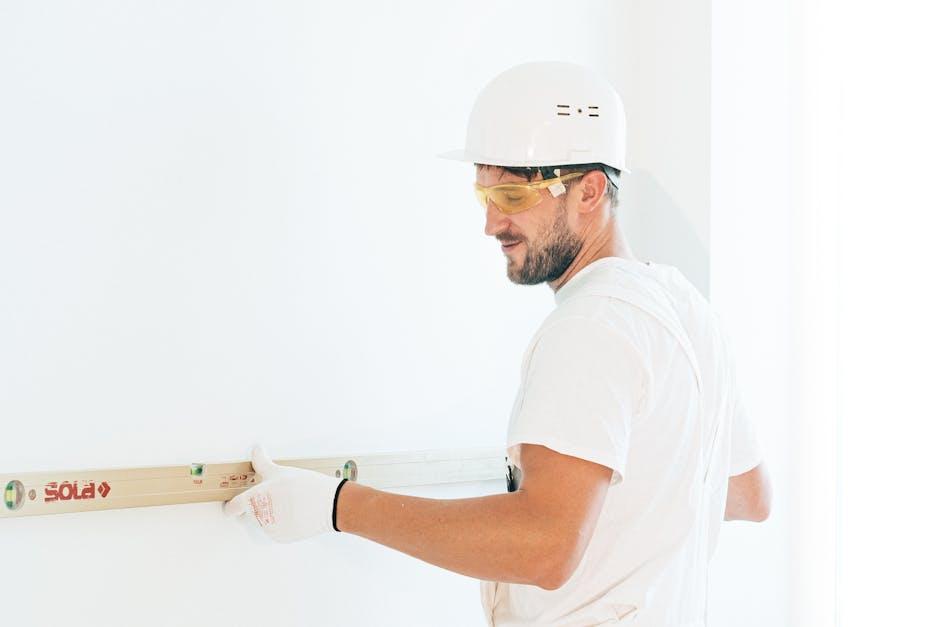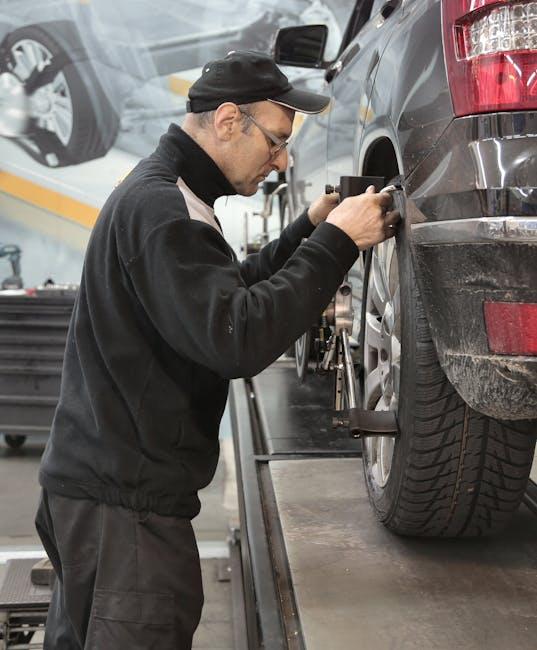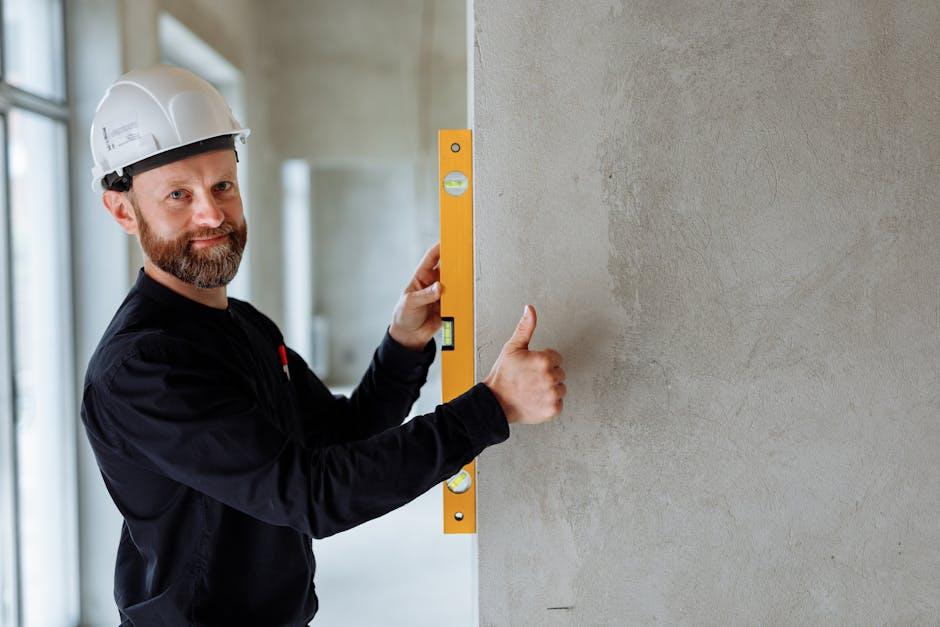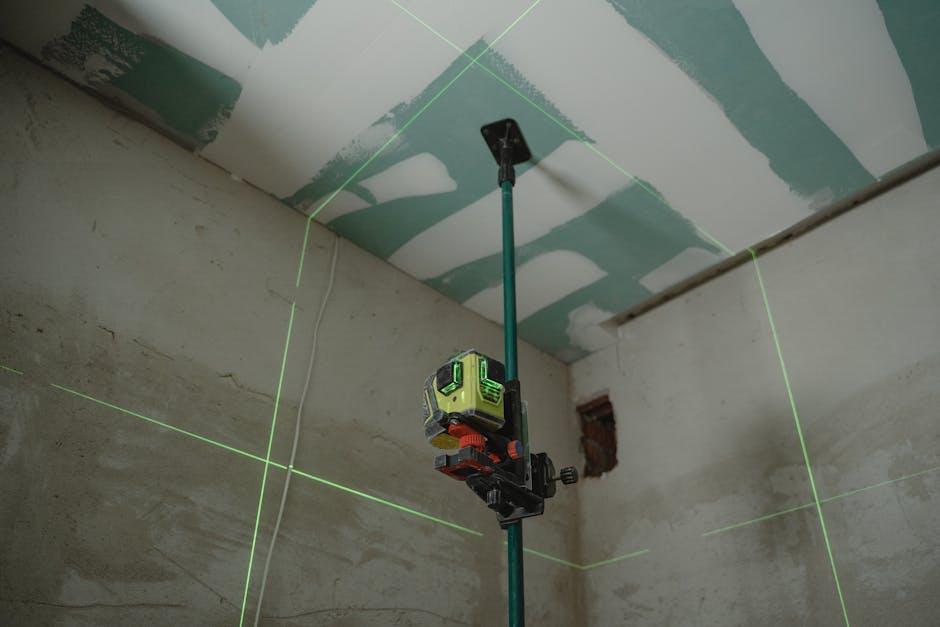In a world where do-it-yourself projects have gained momentum, the allure of taking car maintenance into your own hands is stronger than ever. Among the various tasks that enthusiasts tackle in their garages, wheel alignment stands out as both crucial and complex. But as with many DIY endeavors, the question arises: is stepping up to align your wheels yourself a clever way to save time and money, or a gamble that could cost you more in the long run? This article delves into the delicate balance of DIY alignment—exploring the potential rewards, risks, and what it truly takes to keep your ride running straight and true without professional help.
Table of Contents
- Choosing the Right Tools and Equipment for Accurate DIY Alignment
- Understanding Vehicle Suspension Basics Before You Start
- Step-by-Step Guide to Performing a Home Alignment
- Common Mistakes That Could Compromise Your DIY Effort
- When to Seek Professional Alignment Services for Safety
- Evaluating the Cost Benefits Against Potential Risks of DIY Alignment
- Q&A
- The Way Forward

Choosing the Right Tools and Equipment for Accurate DIY Alignment
Embarking on a DIY alignment journey without the proper tools is akin to setting sail without a compass. The precision required to adjust your vehicle’s suspension and wheels means that investing in quality equipment isn’t just recommended — it’s essential. From camber gauges to steering alignment racks, each tool plays a vital role in ensuring the job is done right the first time. Skimping on tools can lead to inaccurate measurements, uneven tire wear, and compromised vehicle handling, turning what seems like a simple fix into an expensive headache.
When selecting your toolkit, consider the following essentials:
- Camber and Caster Gauges: These measure the vertical tilt of wheels and the angle of the steering axis, critical for vehicle stability.
- Toe Adjustment Tools: Accurate toe alignment ensures wheels point in the right direction, improving tire lifespan and handling.
- Steering Wheel Holder: Keeps your steering wheel steady during adjustments to avoid misalignment.
- Alignment Rack or DIY Rig: Provides a stable platform to measure and tweak your suspension geometry precisely.
| Tool | Purpose | Approximate Price |
|---|---|---|
| Camber Gauge | Measures wheel tilt | $50 – $150 |
| Toe Measurement Gauge | Ensures correct toe alignment | $60 – $200 |
| Steering Wheel Holder | Stabilizes steering wheel | $20 – $40 |
| Alignment Rack | Platform for precise measurements | $250 – $1000+ |

Understanding Vehicle Suspension Basics Before You Start
Before diving into the hands-on process of aligning your vehicle, it’s essential to have a solid grasp of how its suspension works. The suspension system is more than just springs and shocks—it’s a complex network of components designed to keep your ride smooth and your tires gripping the road correctly. At its core, it manages the way your car handles bumps, corners, and uneven surfaces, directly influencing safety and tire wear. Understanding this interplay will help you comprehend why precision matters during alignment.
Key suspension elements interact closely with alignment parameters such as camber, caster, and toe. Here’s a quick overview of what influences your vehicle’s balance and steering:
- Springs: Absorb impacts from road irregularities.
- Shock absorbers: Control spring oscillations to prevent excessive bouncing.
- Control arms and bushings: Maintain wheel position relative to the vehicle frame.
- Steering knuckles and tie rods: Direct wheel angle and response.
| Alignment Parameter | Suspension Component Affected | Effect on Driving |
|---|---|---|
| Camber | Control Arms | Influences tire grip on turns |
| Caster | Steering Knuckles | Affects steering stability |
| Toe | Tie Rods | Controls straight-line tracking |

Step-by-Step Guide to Performing a Home Alignment
Before diving into adjustments, ensure your vehicle is on a flat, level surface and the tires are properly inflated. Gather essential tools such as a car jack, tape measure, wrenches, and alignment bars. Begin by measuring the existing toe, camber, and caster angles; these will be your reference points. Using the measurements, you can identify which wheels need tweaking to return to manufacturer specifications. Always remember, meticulous measurements are the foundation of an accurate alignment.
When making adjustments, take a systematic approach:
- Toe: Adjust the tie rods to align the front edge of the tires appropriately.
- Camber: Loosen and tighten the upper control arm bolts to tilt the wheel inward or outward.
- Caster: Alter the positioning of the strut mounts or control arms to shift the steering pivot angle.
Keep a verification checklist handy to track each change and re-measure after every adjustment. A simple table like the one below can help you monitor adjustments and avoid forgetting critical steps:
| Adjustment | Initial Measurement | Target Spec | Final Measurement |
|---|---|---|---|
| Toe | 0.15° toe-out | 0.00° | 0.02° toe-in |
| Camber | -1.2° | -0.5° | -0.47° |
| Caster | 5.0° | 5.5° | 5.53° |

Common Mistakes That Could Compromise Your DIY Effort
Tackling DIY alignment is tempting, but many enthusiasts underestimate the fine balance required to get it right. One common pitfall is neglecting precise measurements. Even a small deviation in camber or toe can lead to tire wear and compromised handling. Without professional tools, gauging the exact angles can be more guesswork than science. Additionally, some overlook the importance of securely tightening all bolts, risking parts loosening during driving, which can quickly turn a minor fix into a safety hazard.
Another mistake often seen is relying too heavily on visual cues alone. While eyeballing the alignment looks convenient, it rarely matches the accuracy of alignment machines. Ignoring manufacturer specifications or failing to test drive and monitor vehicle behavior afterward can conceal underlying issues. To illustrate the risks, here’s a quick comparison of common DIY missteps and their consequences:
| Error | Potential Impact |
|---|---|
| Imprecise Angle Adjustment | Uneven tire wear, steering pull |
| Loose Bolts | Component failure, safety risk |
| Ignoring Specs | Reduced performance, increased wear |
| Skipping Test Drive | Unnoticed alignment issues |

When to Seek Professional Alignment Services for Safety
If you notice any of the following signs, it’s time to call in the professionals who have the right tools and experience to ensure your vehicle’s alignment is handled safely and accurately:
- Uneven or rapid tire wear
- Your car pulling to one side on a straight road
- Steering wheel vibration or off-center positioning
- After hitting a significant pothole or curb
Ignoring these symptoms can lead to more costly repairs down the road, not to mention compromised control and safety on the highway.
For a clearer comparison, consider this simple overview of when to DIY versus when to seek professional help:
| Scenario | DIY Alignment | Professional Alignment |
|---|---|---|
| Minor adjustments in ideal conditions | Possible with proper guidance | Recommended for accuracy |
| Uneven tire wear or steering issues | Not advised | Mandatory |
| Post-accident or impact damage | Unsafe | Critical |
| Access to specialized equipment | Rare | Standard |
When safety is on the line, the precision and reliability of professional alignment services make all the difference. It’s a calculated investment in your vehicle’s performance and your peace of mind on every drive.

Evaluating the Cost Benefits Against Potential Risks of DIY Alignment
Embracing a DIY approach to alignment can initially seem like a savvy way to save money, especially when professional services come with hefty price tags. The immediate financial benefit is clear: eliminating labor costs, which often comprise the bulk of the expense. Additionally, doing the work yourself provides a learning experience and greater control over the maintenance schedule, potentially translating to future savings. However, these benefits must be balanced against the hidden costs of mistakes. An incorrect alignment can accelerate tire wear, reduce fuel efficiency, and even compromise handling, leading to more expensive repairs down the line.
When assessing cost benefits, consider the following potential risks:
- Specialized Equipment Needs: Accurate alignment requires tools like alignment racks or laser guides, which are costly and complex to operate.
- Time Investment: What starts as a money-saving project could extend into multiple hours, translating to lost productivity.
- Safety Concerns: Poor alignment affects vehicle stability, which might result in dangerous driving scenarios.
| Aspect | DIY Alignment | Professional Service |
|---|---|---|
| Initial Cost | Low (Tools + Time) | Higher (Service Fee) |
| Risk of Errors | High | Low |
| Long-Term Savings | Conditional | Consistent |
| Safety Assurance | Uncertain | Guaranteed |
Q&A
Q&A: DIY Alignment – Is It Worth the Risk?
Q1: What exactly is vehicle alignment, and why does it matter?
Alignment refers to the precise adjustment of your car’s suspension angles—camber, caster, and toe—to ensure your wheels point in the optimal direction. Proper alignment improves tire wear, handling, and fuel efficiency. Misalignment could cause uneven tire wear, steering issues, and compromised safety.
Q2: Why are people considering DIY alignment?
DIY alignment appeals mainly due to cost savings and the sense of accomplishment. Wheel alignment services can be pricey, and some car enthusiasts enjoy tinkering with their vehicles. With online tutorials and affordable tools, the task seems achievable for the handy homeowner.
Q3: What tools and knowledge are essential for a successful DIY alignment?
Accurate alignment requires specialized tools—camber gauges, toe plates or strings, and a level workspace. Understanding suspension geometry and measuring angles precisely is crucial. It’s not just about eyeballing; you need patience, precision, and sometimes multiple tries.
Q4: What are the potential risks involved with DIY alignment?
Improper alignment can lead to uneven tire wear, reduced handling performance, and even unsafe driving conditions. An incorrect toe angle may cause the vehicle to wander or pull, while a wrong camber setting can increase stress on tires and suspension parts. Worst case: costly repairs or accidents.
Q5: Can a DIY alignment be as accurate as a professional one?
While it’s possible to improve your alignment somewhat at home, professional alignments use computer-guided systems far more precise than DIY methods. For most drivers, professional shops ensure alignment within manufacturer specs, something difficult to replicate without advanced equipment.
Q6: When is DIY alignment a reasonable option?
If you have moderate mechanical skills, quality tools, and a good understanding of your vehicle’s suspension, a basic DIY alignment (mainly checking and adjusting toe) can suffice for minor corrections. However, full alignments with more variables are best left to professionals.
Q7: How can one minimize risks when attempting DIY alignment?
Start by thoroughly researching your vehicle’s alignment specs and procedures. Use calibrated tools and proceed step-by-step, frequently testing your adjustments. If in doubt, get a professional check afterward to confirm your work or catch any errors.
Q8: What’s the final verdict: is DIY alignment worth the risk?
For the casual driver, the risk of poor alignment likely outweighs the reward. For experienced DIYers with proper tools, it can be a rewarding challenge that saves money. But when safety and precision matter most, professional alignment remains the safer, wiser choice.
The Way Forward
In the end, DIY alignment sits at a crossroads between savvy savings and potential setbacks. While the allure of taking the wheel on this task can be tempting, it requires a steady hand, the right tools, and a clear understanding of what’s at stake. For some, the satisfaction of a job well-done and the extra dollars left in the wallet make it worth the risk. For others, the cost of a misstep might outweigh the benefits. Ultimately, the decision rests on your confidence, skills, and willingness to accept the consequences—after all, when it comes to keeping your wheels true, sometimes it’s best to know when to call in the pros.
